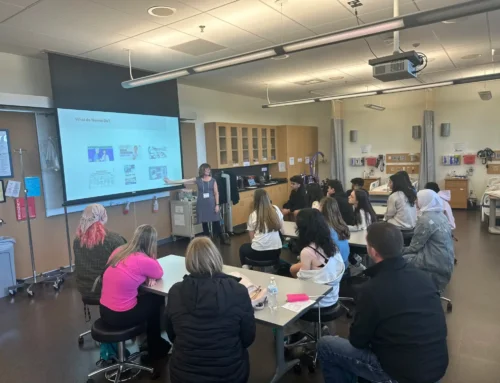The 33rd annual Young Authors Conference will take place the week of March 23-27, 2020, at Skagit Valley College. Last spring, I had the privilege of attending the conference, and I observed hundreds of students completely engaged in workshops facilitated by published authors and illustrators. Watching students creating their own pieces of writing and art, and leaving with books signed by authors clutched tightly in their hands was an inspiring sight. One student exclaimed to me as she boarded the bus,
“Did you know I’m already an author, and I’m only nine!”
This comment demonstrates that this student clearly views herself as a writer. For many students, however, writing can be a challenging subject. Teachers often ask, “How can I support my students who find writing difficult?” While there is no one “right” answer, here are some suggestions for strategies to engage student writers:
- Consider “Low Stakes” Writing: In the article, Keep the Low-Stakes Writing Flowing, the author shares how quick, non-graded writing builds student confidence, increases stamina, and supports classroom content learning.
- Encourage Writer’s Notebooks: NCTE describes a writer’s notebook as “a place to dream, wonder, and explore.” Beyond just a journal, this notebook is a place for students and teachers to capture writing inspirations, take risks, and engage in writing that may, or may not, lead to longer pieces.
- Promote Student Choice: When students have agency over what and how they write, they are often more willing to engage in the writing process. Check out this Scholastic article, Promoting Choice in Writing Workshop to learn more.
- Learn from the Experts: Using mentor texts in the classroom is a strategy that supports our students in “reading like a writer.” There are many resources available online with ideas for mentor texts to use with students, and remember that student writing (with permission) can also make great mentor texts!
Providing opportunities for student writers to share their writing with an audience beyond the teacher is a key component of effective writing instruction. Writer Ralph Fletcher states, “You don’t have to have a book in the bookstore to be published. Getting published means ‘going public’ so your words and ideas can be communicated to many different readers.” At the Young Authors Conference, every student writer brings with them a published piece of writing. Time is set aside for students to share and celebrate their work with others, because student writing is valuable and worth sharing.
Here are some ideas for encouraging students to share their writing in the classroom and beyond:
- The “Golden Line” Protocol: While originally a reading protocol, it works well as a strategy to facilitate student sharing of their writing in a low-risk way. Students choose just one phrase or sentence from their piece of writing to read aloud with no explanation. An entire class can all share their “golden line” in under two minutes, and this often leads to high levels of interest in reading more of their peers’ writing.
- Widen Your Audience: Read the article, Student Athletes Have Audiences. Why Don’t Student Writers?, to learn more about potential audiences for students’ writing.
- Go Big! November is National Novel Writing Month, also known as NaNoWriMo. Their website, NaNoWriMo, has a plethora of writing resources that can be used throughout the year to equip students with the lessons needed to write their own novel. They provide free student workbooks for grades K-2, 3-5, 6-8, and high school as well as “Pep Talks,” which are letters written by famous authors about both the challenges and joys of writing. Check it out!
The registration form for the Young Authors Conference is downloadable below, please join in on this fabulous opportunity for our region’s young writers. We hope to see you there!




